Dials and More
The Sinn 103 marked a new era. The first 103 Tri-Compax model with the column wheel caliber Valjoux 72 appeared around 1966. These can be identified by the dial without "T" and only with the inscription "Swiss" (serial number 296XXX). Later assemblies featured the "T Swiss T" inscription and were assembled from the early 1970s until 1974.
Sinn 103 - Valjoux 72 - Only "SWISS" Dial
Sinn 103 - Valjoux 72 - "T SWISS T" DIAL
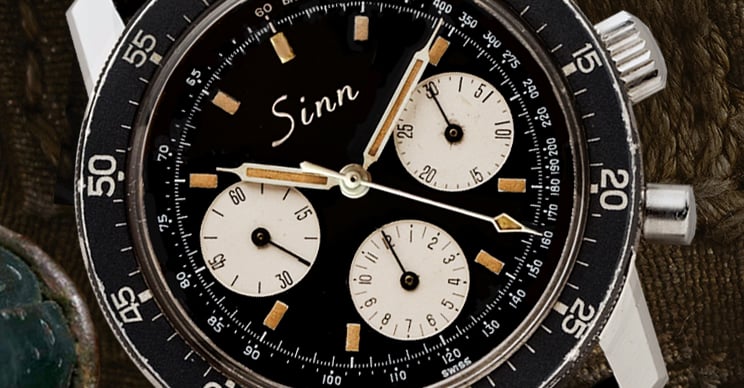

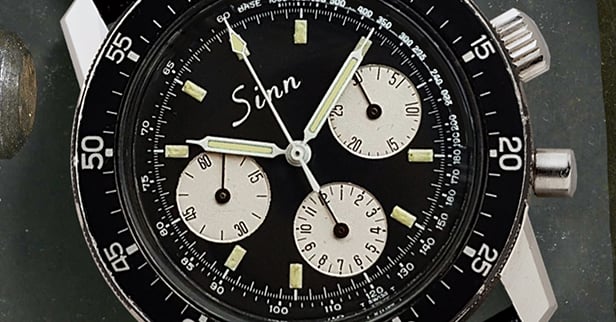

The successor model to the 103 with the Valjoux 72 caliber was the 103 A "Big Eyes," featuring large white subdials and a Valjoux 726 movement.
Until the release of the Sinn 103 A "Big Eyes," some units from the first series of 103s were assembled. Due to the unavailability of the Valjoux 72, the improved Valjoux 726 was used instead.
The Sinn 103 A was introduced in the late 1970s (serial number 358XXX). Later models featured the Sinn logo with a long "S" and serial numbers in the 12XX range. Both models had a black dial with larger white subdials compared to the Sinn 103 Tri-Compax from the first series with the Valjoux 72.
These larger subdials are often referred to as "Big Eyes" due to their slightly larger appearance.
Sinn 103 A - Valjoux 726
Sinn 103 - Valjoux 726 - Long "S" Logo

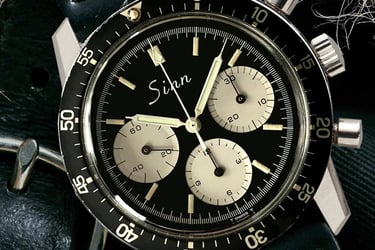
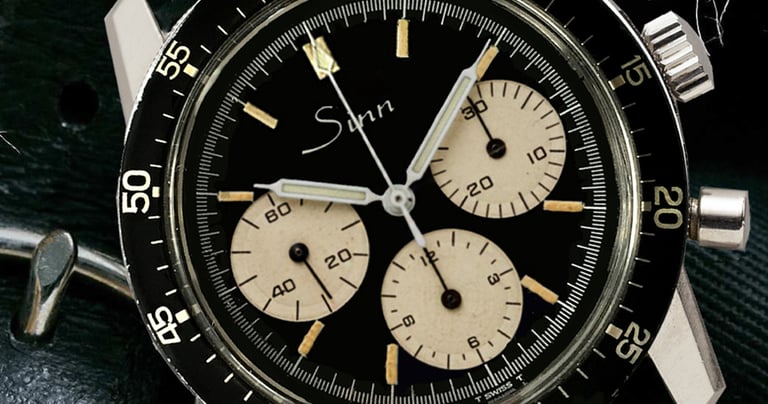

In the 1970s, a simple and timeless design dominated among chronographs. The arrangement of the subsidiary dials as Tri-Compax 3-6-9 was adopted by almost all renowned manufacturers. To this day, it remains unclear who exactly introduced the first chronograph in this design.
This design was also seen from Jaeger Le Coultre, Mathey-Tissot, Breguet, and many other manufacturers. The series of 103 B with Valjoux 726 also had a limited edition; 20 pieces were ordered by civilian pilots of Lufthansa (serial numbers 359XXX, 10XX, 11XX depending on the supplier/case manufacturer at the time).
During one of my meetings with Helmut Sinn, he told me that there were approximately 100 pieces of the Sinn 103 Tri-Compax in total. Exact numbers are not known because there are no records from that time period, and the limited production was due to the availability of the movements, caliber 72, and later Valjoux 726.
One variant of the Sinn 103 B had extra markings at 3, 6, and 9 so that one could better control telephone conversations, which were timed for 3 minutes back then (serial numbers 333XXX, 358XXX). You stood in a phone booth and inserted coins for 3, 6, or 9 minutes; that was the maximum prepayment you could make. With your chronograph, you could then easily keep track of the conversation duration with a glance.
The phone booth was a part of everyday life at that time. Since this time frame was the same for all telephone conversations throughout Europe, these markings were quite useful.
The Sinn 103 B variants were inspired by the Type XX pilot watches and were available with a 30-minute counter and a 15-minute counter. The Type XX variants came in different designs and markings on the 30-minute counter. They featured the typical Type XX propeller hands or normal small hands in the minute counter.
Sinn 103 B - Valjoux 726 - Indexe 3-6-9
SInn 103 B - Valjoux 726 - 15-minute counter

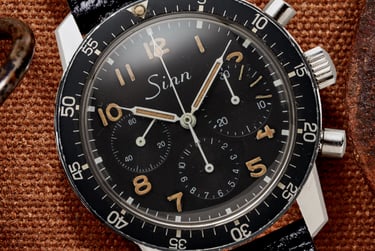
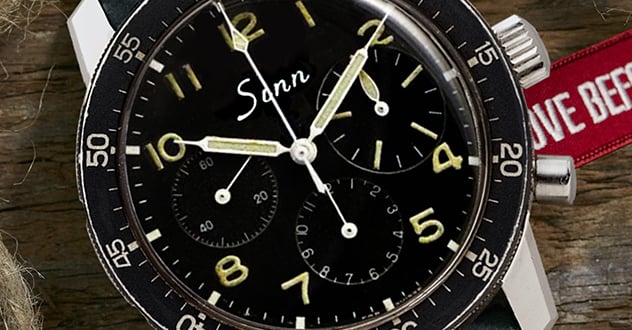

Sinn 103 B "Type XX" - Valjoux 726
SInn 103 B "Big Eye"- Valjoux 726




Who came first or who copied whom?
This question will likely remain unanswered.
The quartz watch crisis threatened the watch industry from around 1970 onwards, marking a long-term economic downturn that led to the bankruptcy of many companies. The almost complete displacement of mechanical watches by quartz technology significantly reduced the number of employees in the traditional watchmaking industry.
Smaller manufacturers like Helmut Sinn remained true to themselves and continued to assemble mechanical watches. During this time, Helmut Sinn sourced materials from many suppliers and acquired surplus stocks of cases, movements, and parts from companies such as Breitling, Gallet, and Excelsior Park.
His main supplier at the time was Guinad S.A., which also assembled the majority of watches for Helmut Sinn and his company. After Helmut Sinn sold his company in 1994, along with all naming rights, he founded his new company, Jubilar-Uhren, and acquired Guinand S.A., his former main supplier.
Sinn 103 C Tachometer - Valjoux 726
Sinn 4 ATM "Panda Dial" - Valjoux 72

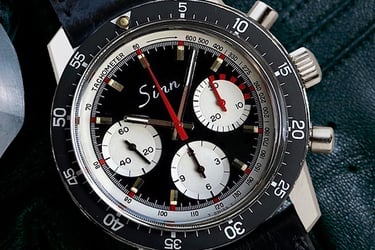

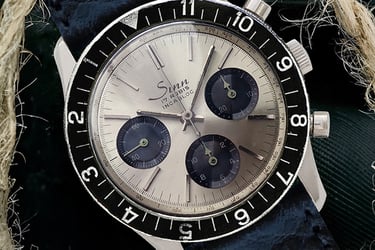
On the Sinn 103 A, the caseback is engraved with "Stainless Steel" on one side and "Swiss Made" on the other side. The serial number is located above the "Swiss Made" engraving, and the engraving is often very faint.
The first series of the Sinn 103, equipped with the Valjoux 72 movement, has serial numbers starting with 296XXX. Later models, including the 103 A "Big Eyes" with the Valjoux 726 movement, have serial numbers starting with 358XXX and 359XXX, with some early models occasionally having serial numbers starting with 333XXX.
Later models featuring the long "S" in the logo have a four-digit serial number starting with 12XX.
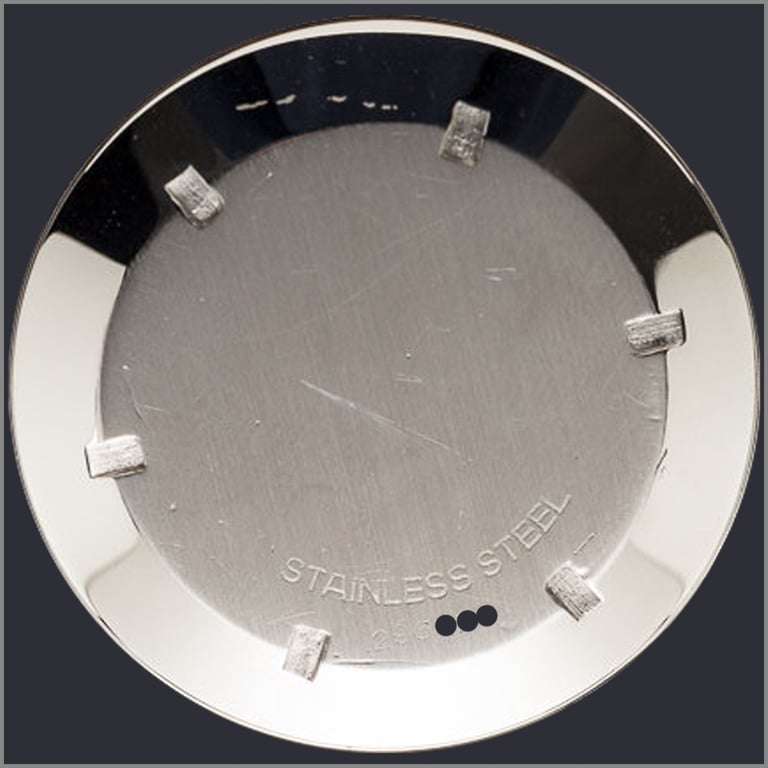

On the Sinn 103 B with the Valjoux 726 movement, the caseback is also engraved with "Stainless Steel" on one side and "Swiss Made" on the other side. The serial number is also located above the "Swiss Made" engraving. These serial numbers typically begin with 358XXX, but they can also start with 10XX and 11XX. In models with serial numbers 10XX and 11XX, only the serial number is engraved without any additional text.
Early models of the 103 B with the 3-6-9 markings on the 30-minute counter also had serial numbers beginning with 333XXX.
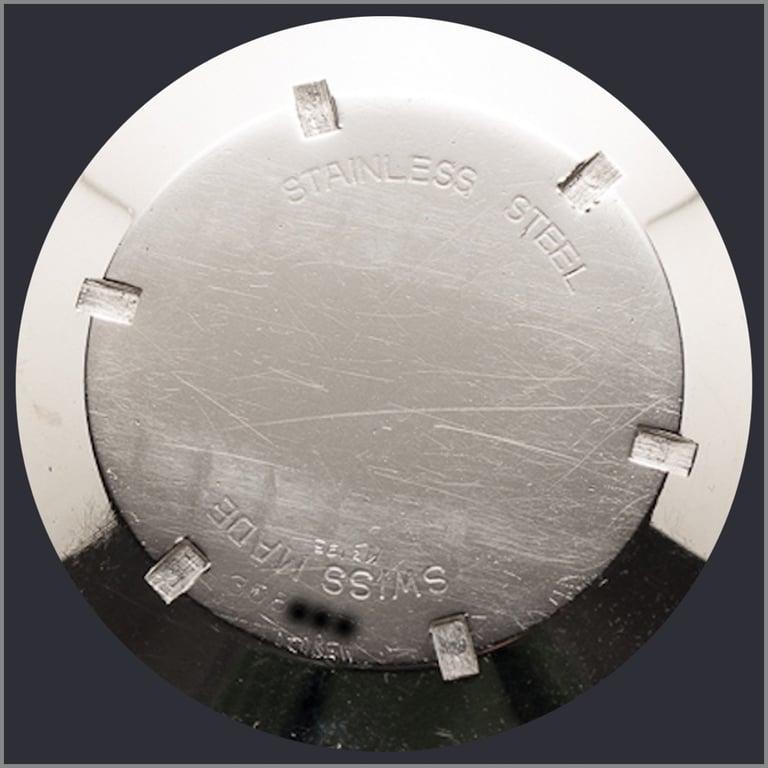

The case back of a Sinn 103 B with Valjoux 726 and a four-digit serial number starting with 10XX is identical to other case backs in this series. The differences lie solely in the engraving and the serial numbers.
The serial numbers of the Sinn 103 Compax series can be either six digits or four digits.

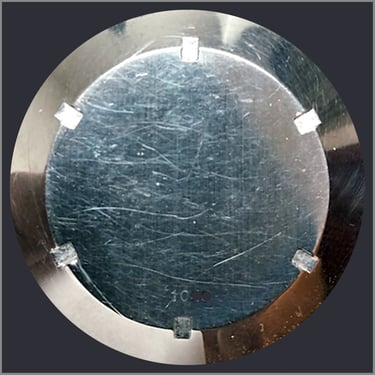
The case back of a Sinn 103 C Tachometer is identical to that of a Mathey-Tissot Tachometer.
Here, the serial number begins, as with the Mathey-Tissot model, with 333XXX and is six digits long.
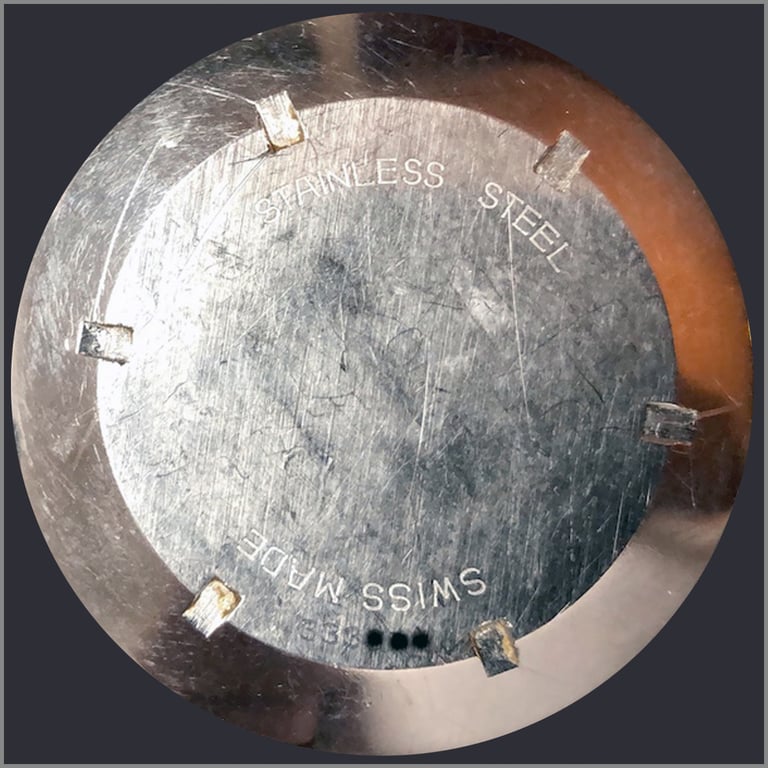

The case back of a Sinn 4 ATM is identical to that of a Jaeger 4 ATM.
The serial number begins, as with the Jaeger model, with 442XXX and is six digits long.
The case back is formed with 14 edges and is identical for both the Sinn 4 ATM and the Jaeger 4 ATM.
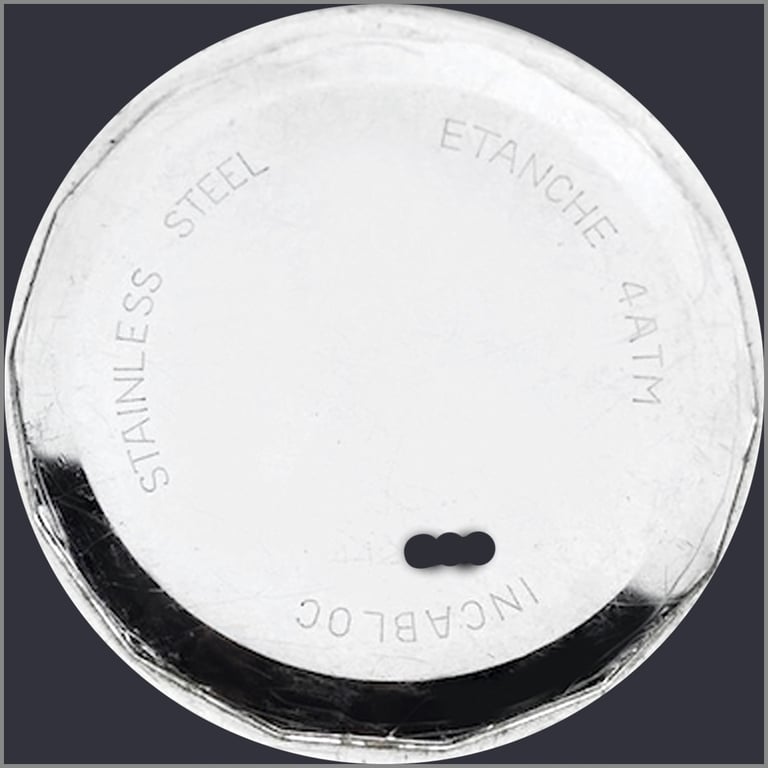

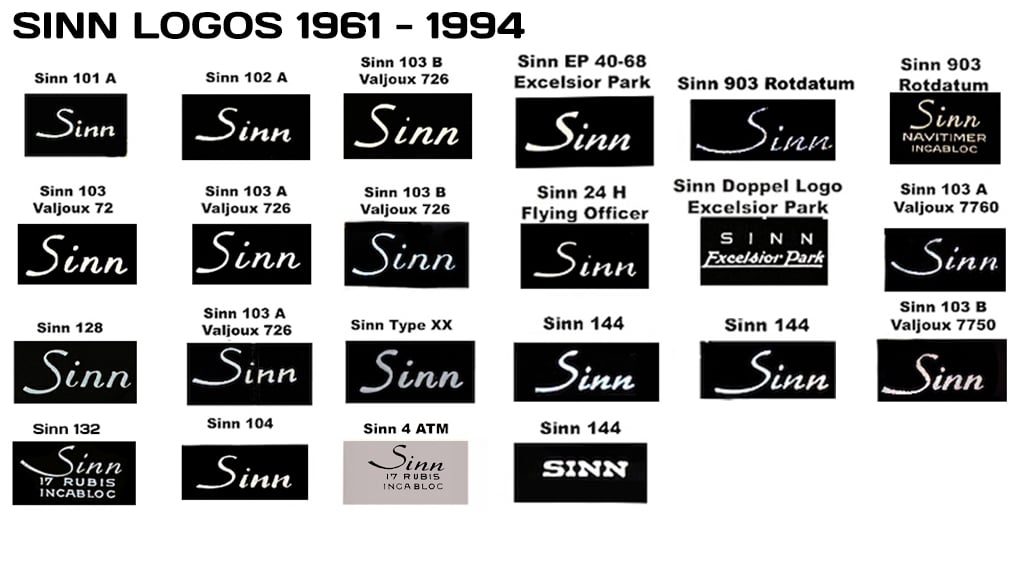

VINTAGE SINN COLLECTOR
Copyright © Vintage Sinn Collector 2023


